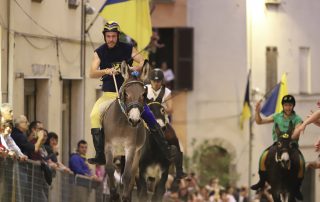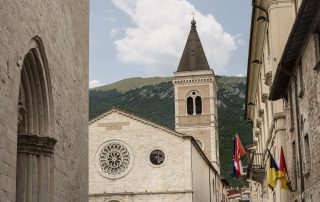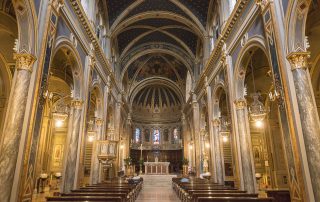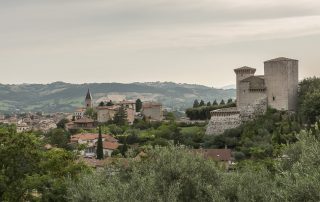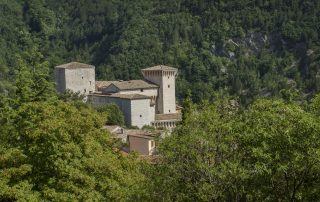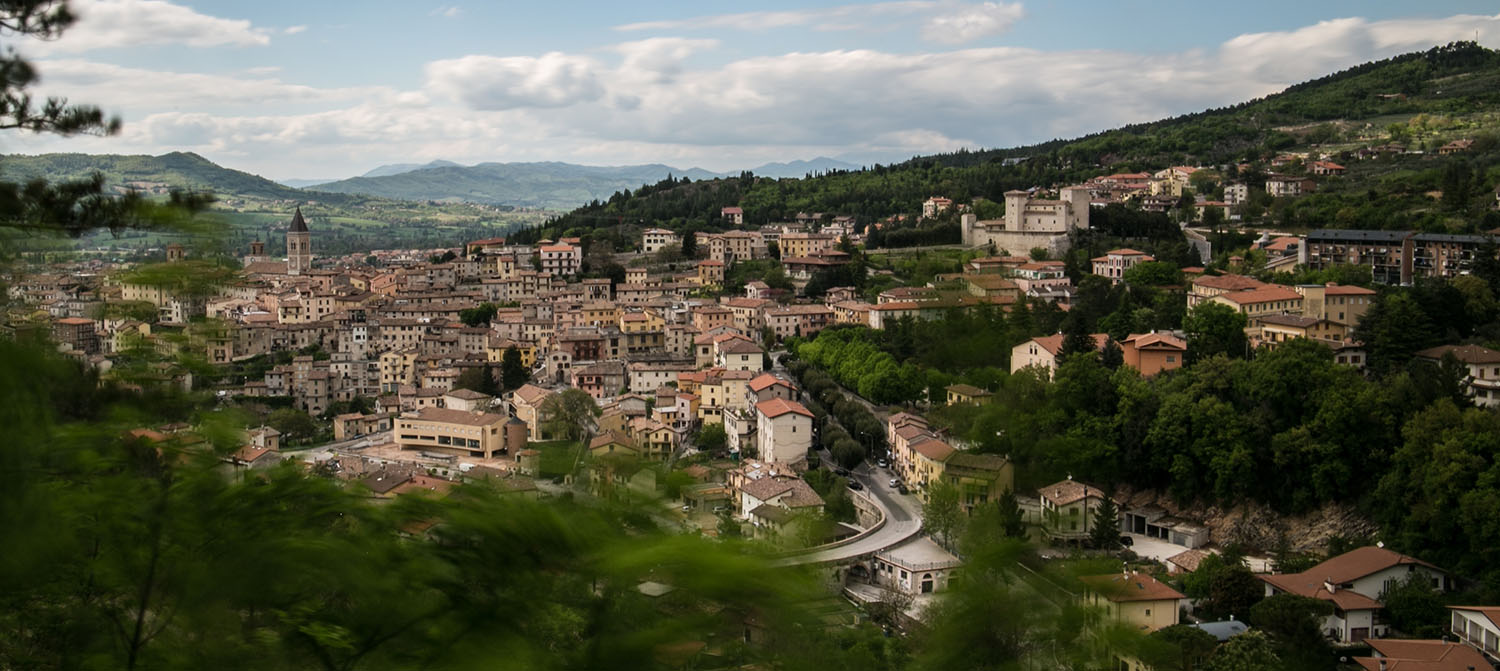
GALLERY
THE CITY
Da recenti studi è emerso che la vetusta Tarsinater umbra, citata nelle Tavole Eugubine, coincideva con l’abitato di Colle I Mori, esistente ai piedi dell’Appennino gualdese dal sec. XIII a. C. al II secolo a. C., mentre la città Tadinum era il municipio romano sviluppatosi lungo la Flaminia, al vocabolo Rasina, intorno al III secolo a. C. Ma origine più remota va ricercata nell’insediamento di epoca preistorica in località Santo Marzio, luogo in cui furono rinvenuti due dischi aurei risalenti al XII sec. a. C., ritenuti la più antica testimonianza di oreficeria in Italia. Assoggettata a Roma nel 266 a. C. e rasa al suolo dalle truppe di Annibale nel 217 a. C., la zona fu devastata più volte dalle incursioni barbariche. Nel 552 fu luogo della famosa battaglia di Tagina o Tadinum, durante la quale il bizantino Narsete sconfisse il re goto Totila. Distrutta nell’anno 996 dalle truppe dell’Imperatore Ottone III, Tadinum venne ricostruita lungo le sponde del Feo, con il nome longobardo di Gualdum (dal tedesco wald, bosco); in seguito al violento incendio causato secondo la leggenda forse da una donna di nome “Bastola”, fu nuovamente riedificata, come comprare in un atto del 30 aprile 1237. Un periodo di rinascita iniziò nel Duecento grazie all’imperatore Federico II. Egli volle il restauro della Rocca Flea e, per proteggere la cittadina dagli attacchi guelfi perugini, nel 1242 la cinse di possenti mura, la dotò di quattro porte di accesso (San Benedetto, San Donato, San Martino e San Facondino) e diciassette torri di difesa. Durante il periodo comunale la città si diede libere istituzioni, Gualdo fu sottomessa da Perugia e nel 1378 ad opera di Bartolo di Sassoferrato ebbe uno dei primi statuti cittadini. In seguito, Gualdo fu sottomessa a Perugia e nel 1458 passò allo Stato Pontificio. Nel 1513, grazie alla sua strategica posizione di confine tra i possedimenti della chiesa e il Ducato di Urbino, fu dichiarata da Papa Leone X sede di Legazione Autonoma e governata da Cardinali Legati, titolo che conservò fino al 1587. Nei due secoli successivi passò sotto l’amministrazione pontificia: nel 1833 le furono conferiti da Papa Gregorio XVI il titolo di Città e il nome “Gualdo Tadino” sia per distinguerla dai centri omonimi, sia per ricordare il municipio romano posto sulla Flaminia. Il doppio nome, Tadinum e Gualdum, porta la memoria delle sue origini: umbra, romana e longobarda.
Recent research has established that the Ancient Umbrian Tarsinater, mentioned in the Iguvine Tables, was none other than the settlement at Colle I Mori, in existence from the 13th to the 2nd centuries BCE in the Apennine foothills around Gualdo, while the town of Tadinum was the Roman municipium, which developed in around the 3rd century BCE, along the Via Flaminia, in the locality called Rasina. One must delve even further back in time to find the origins of a pre-historic settlement located in Santo Marzio, where two gold discs were excavated dating from the 13th century BCE which are considered to be the earliest examples of craftwork in gold found in Italy. Made subject to Rome in 266 BCE and razed to the ground by Hannibal’s army in 217 BCE the area then suffered devastation several times during the Barbaric Invasions. In 552 CE it was the site of the famous Battle of Tagina or Tadinum, when Narses defeated Totila, the King of the Goths. After being destroyed in 996 CE by the troops of Emperor Otto III, Tadinum was rebuilt along the banks of the River Feo and given the Lombard name of Gualdum (from the German word ‘wald’, meaning wood). Following a catastrophic fire, which according to legend was started by a woman called “Bastola”, it was rebuilt once more as stated in a legal document dated 30th April 1237. A period of rebirth began in the 13th century thanks to Emperor Frederick II who ordered the restoration of the Rocca Flea fortress in order to protect the town from attack by the Guelfs from Perugia. He also provided it with fortified walls, four gateways (San Benedetto, San Donato, San Martino and San Facondino) and seventeen defensive towers. In the Communal period, Gualdo set up free institutions of government, then fell under the domination of Perugia, and, in 1378, obtained one of the earliest Town Statutes, written by Bartolo di Sassoferrato. Later, Gualdo was again subjected to Perugia and then, in 1458, became part of the Papal States. In 1513, due to its strategic frontier position between the territory of the Church and the Dukedom of Urbino, Pope Leo X declared it to be the seat of an Autonomous Legation, governed by Cardinal Legates, a title it preserved until 1587. Thereafter, for two centuries, it was under Pontifical administration and in 1833, Pope Gregory XVI proclaimed it to be a City under the name of Gualdo Tadino. This was not only chosen to distinguish it from other towns called Gualdo, but also to recall the Roman municipium along the Flaminia. This duality in its name, Tadinum and Gualdum, evokes the memory of its Umbrian, Roman and Lombard origins.

